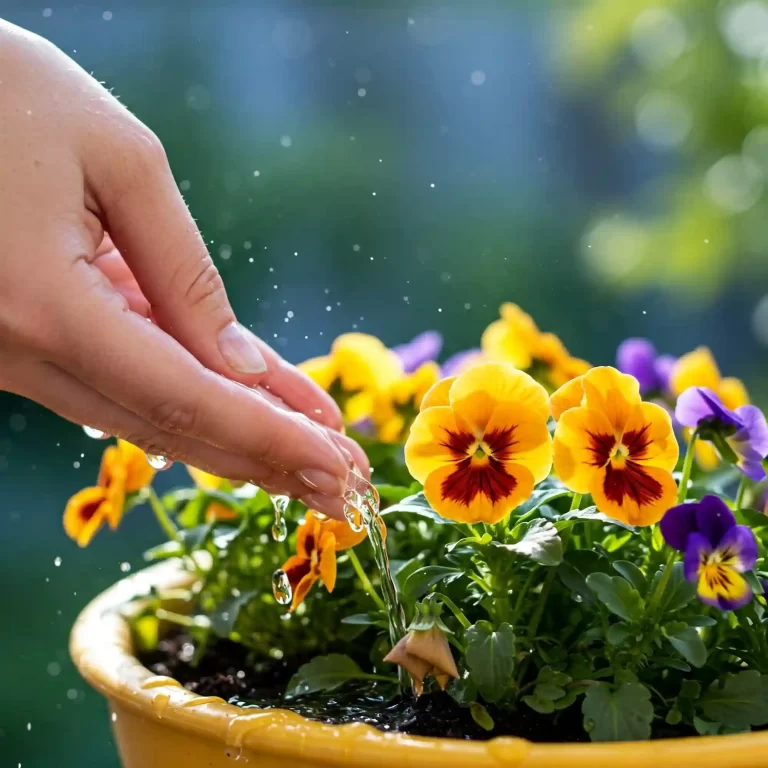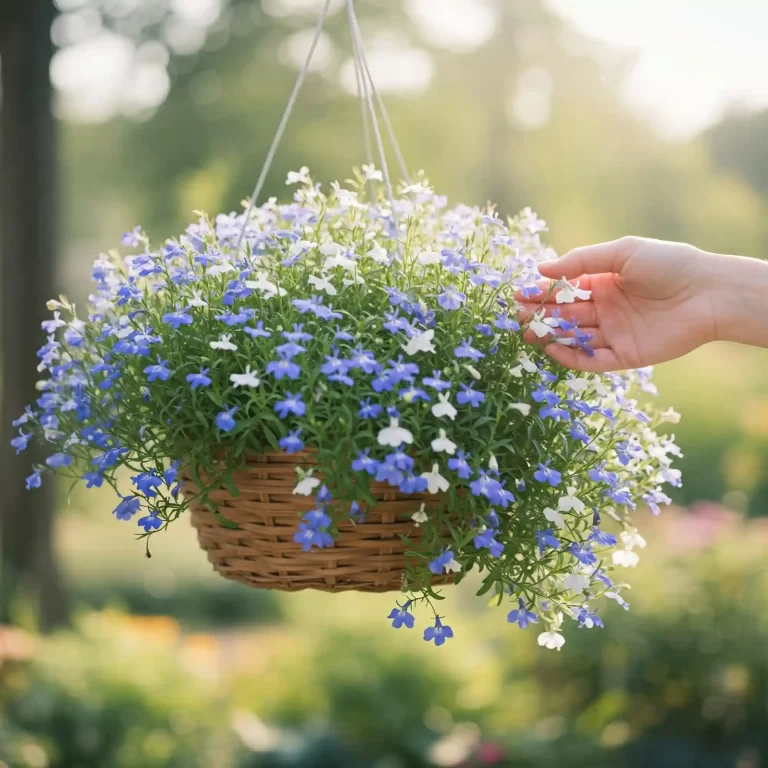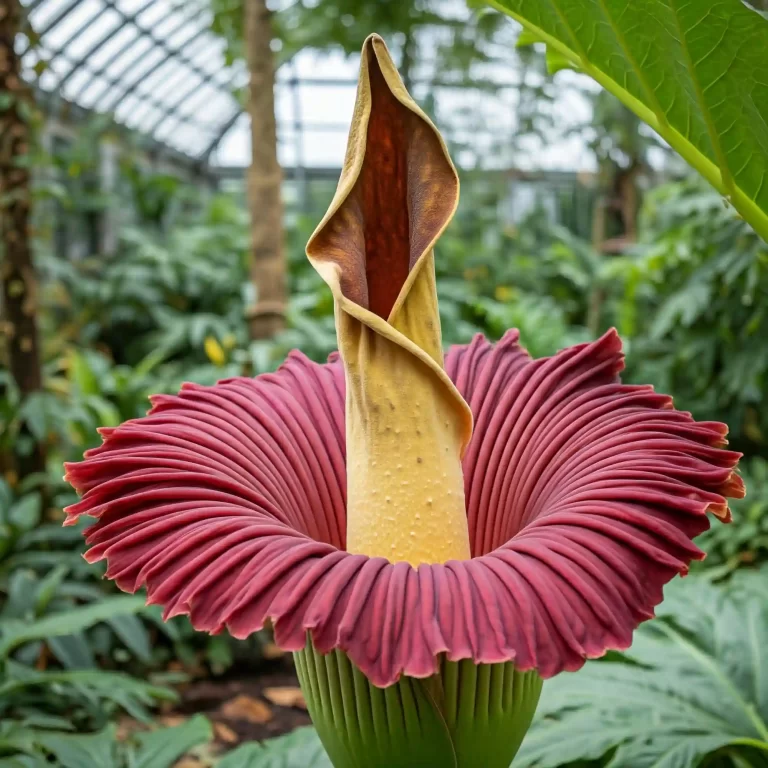Growing Tiger-flowers (Tigridia pavonia) can be a rewarding experience for any gardener. These vibrant, exotic flowers not only add a splash of color to your garden but also attract pollinators, enhancing the overall health of your garden ecosystem. However, many gardeners struggle with the specifics of planting and caring for these unique flowers. This guide aims to solve that problem by providing detailed, step-by-step instructions on how to grow Tiger-flowers successfully. By the end of this article, you’ll have all the knowledge you need to cultivate these stunning flowers and enjoy their beauty in your garden.
What Are Tiger-flowers?
Tiger-flowers, scientifically known as Tigridia pavonia, are a striking addition to any garden. These flowers are native to Mexico and Central America and are known for their vibrant, multicolored blooms that resemble the patterns of a tiger’s coat, hence the name. Each flower typically lasts only a day, but the plant produces multiple blooms over the flowering season, ensuring a continuous display of color.
Description and Characteristics
Tiger-flowers are part of the Iridaceae family, which includes other popular garden plants like irises and crocuses. They grow from bulbs and can reach heights of 18 to 24 inches. The flowers themselves are large, often measuring up to 6 inches in diameter, and come in a variety of colors including red, pink, yellow, orange, and white. The petals are usually spotted or streaked with contrasting colors, adding to their exotic appearance.
Origin and History
The history of Tiger-flowers dates back to ancient times when they were cultivated by the Aztecs for their beauty and medicinal properties. The name “Tigridia” is derived from the Latin word “tigris,” meaning tiger, and “idia,” meaning resemblance, referring to the flower’s tiger-like patterns. Over the centuries, these flowers have been introduced to gardens around the world, where they continue to be cherished for their unique beauty.
Varieties of Tiger-flowers
There are several varieties of Tiger-flowers, each with its own unique characteristics. Some of the most popular varieties include:
- Tigridia pavonia ‘Alba’: Known for its pure white flowers with yellow and red spots.
- Tigridia pavonia ‘Canariensis’: Features bright yellow flowers with red spots.
- Tigridia pavonia ‘Lilacea’: Boasts pink flowers with red and yellow spots.
- Tigridia pavonia ‘Speciosa’: Displays red flowers with yellow and white spots.
Each variety offers a different color palette, allowing gardeners to choose the perfect Tiger-flower to complement their garden design.
Popular Varieties of Tiger-flowers
| Variety Name | Flower Color | Unique Features |
| Tigridia pavonia ‘Alba’ | White with yellow/red | Pure white flowers with vibrant spots |
| Tigridia pavonia ‘Canariensis’ | Yellow with red | Bright yellow flowers with red spots |
| Tigridia pavonia ‘Lilacea’ | Pink with red/yellow | Pink flowers with contrasting spots |
| Tigridia pavonia ‘Speciosa’ | Red with yellow/white | Red flowers with intricate patterns |
Benefits of Growing Tiger-flowers
Tiger-flowers are not only beautiful but also offer several benefits to your garden. Here are some reasons why you should consider growing them:
- Aesthetic Appeal: The vibrant colors and unique patterns of Tiger-flowers make them a standout feature in any garden.
- Attracting Pollinators: These flowers attract bees, butterflies, and other pollinators, which can help improve the health and productivity of your garden.
- Low Maintenance: Once established, Tiger-flowers require minimal care, making them an excellent choice for busy gardeners.
- Versatility: Tiger-flowers can be grown in garden beds, borders, or containers, providing flexibility in garden design.
Best Benefits of Growing Tiger-flowers
- Aesthetic Appeal: Adds vibrant colors and unique patterns to your garden.
- Attracting Pollinators: Helps improve garden health and productivity.
- Low Maintenance: Requires minimal care once established.
- Versatility: Suitable for garden beds, borders, and containers.
Choosing the Right Location
Selecting the right location for your Tiger-flowers is crucial for their growth and blooming. These flowers thrive in specific conditions, and providing the right environment will ensure they flourish.
Ideal Climate and Hardiness Zones
Tiger-flowers are best suited for USDA hardiness zones 8 to 10. They prefer warm climates and can tolerate temperatures as low as 20°F (-6°C). In cooler climates, Tiger-flowers can be grown as annuals or in containers that can be brought indoors during the winter months.
Best Garden Spots for Planting
When choosing a spot in your garden, look for an area that receives full sun to partial shade. Tiger-flowers need at least 6 hours of direct sunlight each day to bloom profusely. Avoid planting them in areas with heavy shade, as this can hinder their growth and flowering.
Considerations for Growing Tiger-flowers in Pots
If you have limited garden space or live in a cooler climate, growing Tiger-flowers in pots is a great option. Choose a pot that is at least 12 inches in diameter and has good drainage. Use a well-draining potting mix and place the pot in a sunny location. Remember to bring the pots indoors before the first frost to protect the bulbs from freezing temperatures.
Ideal Planting Conditions for Tiger-flowers
| Condition | Requirement |
| Hardiness Zones | 8 to 10 |
| Temperature Tolerance | Down to 20°F (-6°C) |
| Sunlight | Full sun to partial shade (6+ hours) |
| Soil | Well-draining, fertile |
| Container Size (for pots) | At least 12 inches in diameter |
Soil Preparation
Proper soil preparation is essential for the healthy growth of Tiger-flowers. These flowers thrive in well-draining, fertile soil that provides the necessary nutrients for their development.
Best Soil Types for Tiger-flowers
Tiger-flowers prefer sandy or loamy soil with good drainage. Heavy clay soils can retain too much moisture, leading to bulb rot. If your garden soil is heavy, consider amending it with sand or organic matter to improve drainage.
How to Test and Amend Soil
Before planting, it’s a good idea to test your soil to determine its pH and nutrient levels. You can use a home soil test kit or send a sample to a local extension service for analysis. Tiger-flowers prefer a slightly acidic to neutral pH (6.0 to 7.0). If your soil is too acidic, you can add lime to raise the pH. Conversely, if the soil is too alkaline, sulfur can be added to lower the pH.
Importance of Drainage
Good drainage is crucial for preventing bulb rot and ensuring healthy growth. If your garden soil tends to retain water, consider planting Tiger-flowers in raised beds or adding organic matter such as compost or well-rotted manure to improve soil structure and drainage.
Steps for Soil Preparation
- Test Soil: Determine pH and nutrient levels.
- Amend Soil: Adjust pH with lime or sulfur as needed.
- Improve Drainage: Add sand or organic matter to heavy soils.
- Fertilize: Incorporate compost or well-rotted manure for added nutrients.
Planting Tiger-flower Bulbs
Planting Tiger-flower bulbs correctly is key to ensuring they grow and bloom beautifully. Follow these steps to plant your bulbs successfully.
When to Plant Tiger-flower Bulbs
The best time to plant Tiger-flower bulbs is in the spring, after the last frost has passed. This allows the bulbs to establish roots before the growing season begins. In warmer climates, you can also plant the bulbs in the fall for early spring blooms.
Step-by-Step Planting Guide
- Choose a Location: Select a sunny spot with well-draining soil.
- Prepare the Soil: Amend the soil as needed to ensure good drainage.
- Dig Holes: Dig holes that are 3 to 4 inches deep and spaced 6 to 8 inches apart.
- Plant Bulbs: Place the bulbs in the holes with the pointed end facing up.
- Cover and Water: Cover the bulbs with soil and water thoroughly.
Spacing and Depth Requirements
Proper spacing and planting depth are important for the healthy growth of Tiger-flowers. Plant the bulbs 3 to 4 inches deep and space them 6 to 8 inches apart. This allows enough room for the bulbs to grow and prevents overcrowding, which can lead to poor air circulation and increased risk of disease.
Planting Steps for Tiger-flower Bulbs
- Choose Location: Sunny spot with well-draining soil.
- Prepare Soil: Amend soil for drainage.
- Dig Holes: 3 to 4 inches deep, 6 to 8 inches apart.
- Plant Bulbs: Place bulbs with the pointed end facing up.
- Cover and Water: Cover bulbs with soil and water thoroughly.
Watering and Fertilizing
Proper watering and fertilizing are crucial for the healthy growth of Tiger-flowers. These practices ensure that the plants receive the necessary nutrients and moisture to thrive.
Watering Schedule and Techniques
Tiger-flowers require consistent moisture, especially during their growing season. Water the plants deeply once a week, ensuring the soil remains moist but not waterlogged. During hot, dry periods, you may need to water more frequently. It’s best to water in the morning to allow the foliage to dry out during the day, reducing the risk of fungal diseases.
Types of Fertilizers to Use
Tiger-flowers benefit from a balanced, slow-release fertilizer applied at the time of planting. A 10-10-10 (N-P-K) fertilizer is ideal. Additionally, you can use a liquid fertilizer every 4 to 6 weeks during the growing season to promote healthy growth and abundant blooms. Organic options such as compost tea or fish emulsion are also effective.
How to Avoid Overwatering and Nutrient Burn
Overwatering can lead to bulb rot, while excessive fertilization can cause nutrient burn. To avoid these issues, always check the soil moisture before watering and follow the recommended fertilizer application rates. If the leaves start to yellow or show signs of burn, reduce the frequency of fertilization and ensure proper drainage.
Watering and Fertilizing Tips
- Water Deeply: Once a week, more frequently in hot weather.
- Morning Watering: Reduces risk of fungal diseases.
- Balanced Fertilizer: Use a 10-10-10 slow-release fertilizer.
- Liquid Fertilizer: Apply every 4 to 6 weeks during growing season.
- Organic Options: Compost tea or fish emulsion.
- Check Soil Moisture: Avoid overwatering.
- Follow Application Rates: Prevent nutrient burn.
Sunlight Requirements
Tiger-flowers thrive in full sun to partial shade. Understanding their sunlight needs is essential for ensuring they bloom profusely and grow healthily.
Optimal Sunlight Exposure
Tiger-flowers need at least 6 hours of direct sunlight each day. Full sun exposure promotes vigorous growth and abundant flowering. In regions with intense summer heat, providing some afternoon shade can help protect the plants from scorching.
Adjusting for Different Climates
In cooler climates, full sun is ideal to maximize the warmth and light the plants receive. In hotter climates, partial shade during the hottest part of the day can prevent the flowers from wilting and the foliage from burning. Adjusting the planting location based on your climate will help ensure the best growth conditions.
Signs of Too Much or Too Little Sunlight
Tiger-flowers will show signs if they are receiving too much or too little sunlight. If the plants are not blooming well or the leaves are pale and leggy, they may need more sunlight. Conversely, if the leaves are scorched or the flowers are wilting quickly, they may be getting too much direct sun.
Sunlight Requirements for Tiger-flowers
- Full Sun: At least 6 hours of direct sunlight daily.
- Partial Shade: Beneficial in regions with intense heat.
- Cooler Climates: Full sun to maximize warmth and light.
- Hotter Climates: Partial shade during the hottest part of the day.
- Signs of Sunlight Issues: Pale, leggy growth (too little sun); scorched leaves, wilting flowers (too much sun).
Common Pests and Diseases
Tiger-flowers are relatively hardy but can be susceptible to certain pests and diseases. Identifying and managing these issues early can help keep your plants healthy.
Identifying Common Pests
Some common pests that affect Tiger-flowers include aphids, slugs, and spider mites. Aphids can cause distorted growth and leave a sticky residue on the plants. Slugs can chew holes in the leaves, while spider mites can cause stippling and webbing on the foliage.
Disease Prevention and Treatment
Tiger-flowers can be affected by fungal diseases such as botrytis and root rot. To prevent these diseases, ensure good air circulation around the plants and avoid overhead watering. If you notice signs of disease, such as moldy spots or wilting, remove the affected parts and treat with a fungicide if necessary.
Organic and Chemical Control Methods
For pest control, organic methods such as neem oil, insecticidal soap, and diatomaceous earth can be effective. Chemical pesticides can also be used, but they should be a last resort due to their potential impact on beneficial insects and the environment. Always follow the instructions on the label when using any pesticide.
Common Pests and Diseases of Tiger-flowers
- Aphids: Cause distorted growth, sticky residue.
- Slugs: Chew holes in leaves.
- Spider Mites: Cause stippling, webbing on foliage.
- Botrytis: Fungal disease causing moldy spots.
- Root Rot: Caused by overwatering and poor drainage.
- Organic Control: Neem oil, insecticidal soap, diatomaceous earth.
- Chemical Control: Use as a last resort, follow label instructions.
Seasonal Care and Maintenance
Proper seasonal care and maintenance are essential for keeping your Tiger-flowers healthy and ensuring they bloom year after year.
Spring and Summer Care Tips
In the spring, remove any mulch or debris from around the plants to allow new growth to emerge. Apply a balanced fertilizer to support early growth. During the summer, keep the soil consistently moist and deadhead spent flowers to encourage continuous blooming.
Preparing Tiger-flowers for Winter
In colder climates, Tiger-flower bulbs need to be dug up and stored indoors over the winter. After the first frost, carefully dig up the bulbs, remove any soil, and let them dry for a few days. Store the bulbs in a cool, dry place in a paper bag or a box filled with peat moss.
Pruning and Deadheading
Regular pruning and deadheading help maintain the plant’s appearance and encourage more blooms. Remove any dead or damaged leaves and spent flowers throughout the growing season. This not only keeps the plants looking tidy but also directs energy towards new growth and flowering.
Seasonal Care Tips for Tiger-flowers
- Spring Care: Remove mulch, apply balanced fertilizer.
- Summer Care: Keep soil moist, deadhead spent flowers.
- Winter Preparation: Dig up and store bulbs in colder climates.
- Pruning: Remove dead or damaged leaves.
- Deadheading: Encourage continuous blooming.
Propagation Techniques
Propagating Tiger-flowers allows you to expand your garden and share these beautiful plants with others. There are several methods for propagating Tiger-flowers, including bulb division and seed propagation.
How to Propagate Tiger-flowers from Bulbs
The most common method of propagating Tiger-flowers is by dividing the bulbs. This is best done in the fall after the plants have finished blooming. Carefully dig up the bulbs and separate the offsets (small bulbs) from the parent bulb. Replant the offsets immediately or store them for planting in the spring.
Seed Propagation Methods
Tiger-flowers can also be grown from seeds, although this method is less common and takes longer. Collect seeds from mature flowers and sow them in a seed tray filled with a well-draining potting mix. Keep the soil moist and place the tray in a warm, sunny location. Once the seedlings are large enough to handle, transplant them into individual pots or directly into the garden.
Division and Transplanting Tips
When dividing and transplanting Tiger-flower bulbs, handle them carefully to avoid damaging the delicate roots. Plant the bulbs at the same depth they were growing previously and water them well after planting. Transplanting is best done in the spring or fall when the plants are not actively growing.
Propagation Techniques for Tiger-flowers
- Bulb Division: Separate offsets from parent bulb in fall.
- Seed Propagation: Sow seeds in well-draining potting mix.
- Transplanting: Handle bulbs carefully, plant at same depth.
- Timing: Best done in spring or fall.
Harvesting and Storing Bulbs
Proper harvesting and storage of Tiger-flower bulbs ensure that they remain healthy and ready for planting in the next growing season.
When and How to Harvest Tiger-flower Bulbs
Harvest Tiger-flower bulbs in the fall after the foliage has died back. Carefully dig up the bulbs, being mindful not to damage them. Shake off any excess soil and allow the bulbs to dry in a cool, shaded area for a few days.
Proper Storage Techniques
Store the dried bulbs in a cool, dry place, such as a basement or garage. Place the bulbs in a paper bag or a box filled with peat moss or sawdust to prevent them from drying out completely. Check the bulbs periodically for signs of mold or rot and remove any affected bulbs immediately.
Preparing Bulbs for the Next Planting Season
Before planting the bulbs in the spring, inspect them for any signs of damage or disease. Discard any bulbs that are soft or moldy. If necessary, treat the bulbs with a fungicide to prevent disease. Replant the bulbs following the same steps outlined in the planting section.
Harvesting and Storing Tiger-flower Bulbs
- Harvesting: Dig up bulbs in fall after foliage dies back.
- Drying: Allow bulbs to dry for a few days in a cool, shaded area.
FAQs
How to grow Tiger-flowers in pots?
Growing Tiger-flowers in pots is a great option for those with limited garden space or in cooler climates. Choose a pot that is at least 12 inches in diameter with good drainage. Use a well-draining potting mix and place the pot in a sunny location. Water regularly to keep the soil moist but not waterlogged. Bring the pots indoors before the first frost to protect the bulbs from freezing temperatures.
Best soil for growing Tiger-flowers?
Tiger-flowers thrive in sandy or loamy soil with good drainage. The soil should be slightly acidic to neutral (pH 6.0 to 7.0). If your garden soil is heavy clay, amend it with sand or organic matter to improve drainage. Testing the soil before planting can help you make the necessary adjustments to create the ideal growing conditions.
How to propagate Tiger-flowers from bulbs?
Propagating Tiger-flowers from bulbs is best done in the fall. Carefully dig up the bulbs and separate the offsets from the parent bulb. Replant the offsets immediately or store them in a cool, dry place for planting in the spring. Ensure the bulbs are planted at the same depth they were growing previously and water them well after planting.
Common problems when growing Tiger-flowers?
Common problems when growing Tiger-flowers include pests such as aphids, slugs, and spider mites, as well as fungal diseases like botrytis and root rot. Ensuring good air circulation, proper watering, and using organic or chemical control methods can help manage these issues. Regularly inspecting your plants and taking preventive measures can keep them healthy.
How to fertilize Tiger-flowers for best results?
Use a balanced, slow-release fertilizer such as 10-10-10 at the time of planting. Additionally, apply a liquid fertilizer every 4 to 6 weeks during the growing season. Organic options like compost tea or fish emulsion are also effective. Avoid over-fertilizing to prevent nutrient burn and always follow the recommended application rates.
How to protect Tiger-flowers from pests?
To protect Tiger-flowers from pests, use organic methods such as neem oil, insecticidal soap, and diatomaceous earth. Chemical pesticides can also be used as a last resort. Ensure good garden hygiene by removing debris and dead plant material, which can harbor pests. Regularly inspect your plants and take action at the first sign of pest activity.
Conclusion
Growing Tiger-flowers can be a rewarding experience, adding vibrant colors and unique patterns to your garden. By following the detailed steps outlined in this guide, you can ensure your Tiger-flowers thrive and bloom beautifully. Remember to choose the right location, prepare the soil properly, and provide consistent care throughout the growing season. With the right knowledge and effort, you’ll enjoy the stunning beauty of Tiger-flowers in your garden year after year. Happy gardening!




